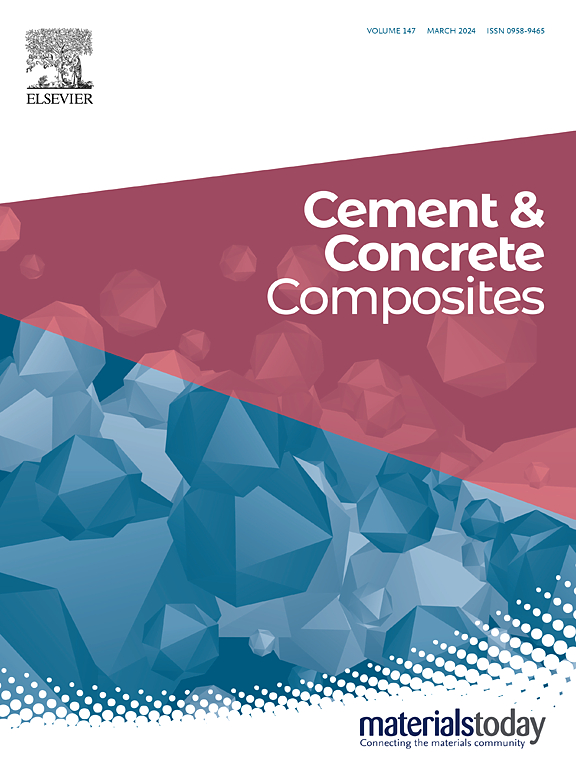Investigation of a supplementary cementitious material with three reactive components: the example of a carbonated mineral composite
IF 13.1
1区 工程技术
Q1 CONSTRUCTION & BUILDING TECHNOLOGY
引用次数: 0
Abstract
The search for feasible low-carbon cement leads to an increase in the complexity of the mineralogy and chemistry of the binders. This study investigates a carbonated mineral composite as a potential SCM. It is composed of three major components: a filler (calcium carbonate), a pozzolanic component (Al-Si gel) and a potential hydraulic component (C2(A,F)). We examine the compatibility and contribution of each of these compounds as a supplementary cementitious material with the combined use of experimental methods and thermodynamic modelling. In particular, we demonstrate the early-age reactivity of this SCM in blended cement, validated by compressive strength on concrete (SAI = 1) at 28 days, although the reactivity test would imply a behavior similar to fly ash. The strength development is linked to an increased precipitation of AFm phases, and the contribution of the ferrite. The latter is confirmed through the direct observation of Fe-Si-hydrogarnet precipitation by SEM-EDS. The limitations of current analytical methods and their impact on the formulation of new ternary and quaternary blends are discussed.
具有三种反应组分的补充胶凝材料的研究:以碳酸矿物复合材料为例
寻找可行的低碳水泥导致粘合剂的矿物学和化学复杂性的增加。本文研究了一种碳酸矿物复合材料作为潜在的复合材料。它由三种主要成分组成:填料(碳酸钙)、火山灰组分(Al-Si凝胶)和潜在的液压组分(C2(a,F))。我们检查的兼容性和贡献的每一个这些化合物作为补充胶凝材料与实验方法和热力学建模相结合的使用。特别是,我们展示了这种SCM在混合水泥中的早期反应性,通过28天混凝土的抗压强度(SAI=1)来验证,尽管反应性测试表明其行为与粉煤灰相似。强度的发展与AFm相析出的增加和铁素体的贡献有关。后者通过SEM-EDS直接观察铁硅水榴石的沉淀得到证实。讨论了现有分析方法的局限性及其对三元和四元共混物配方的影响。
本文章由计算机程序翻译,如有差异,请以英文原文为准。
求助全文
约1分钟内获得全文
求助全文
来源期刊

Cement & concrete composites
工程技术-材料科学:复合
CiteScore
18.70
自引率
11.40%
发文量
459
审稿时长
65 days
期刊介绍:
Cement & concrete composites focuses on advancements in cement-concrete composite technology and the production, use, and performance of cement-based construction materials. It covers a wide range of materials, including fiber-reinforced composites, polymer composites, ferrocement, and those incorporating special aggregates or waste materials. Major themes include microstructure, material properties, testing, durability, mechanics, modeling, design, fabrication, and practical applications. The journal welcomes papers on structural behavior, field studies, repair and maintenance, serviceability, and sustainability. It aims to enhance understanding, provide a platform for unconventional materials, promote low-cost energy-saving materials, and bridge the gap between materials science, engineering, and construction. Special issues on emerging topics are also published to encourage collaboration between materials scientists, engineers, designers, and fabricators.
 求助内容:
求助内容: 应助结果提醒方式:
应助结果提醒方式:


